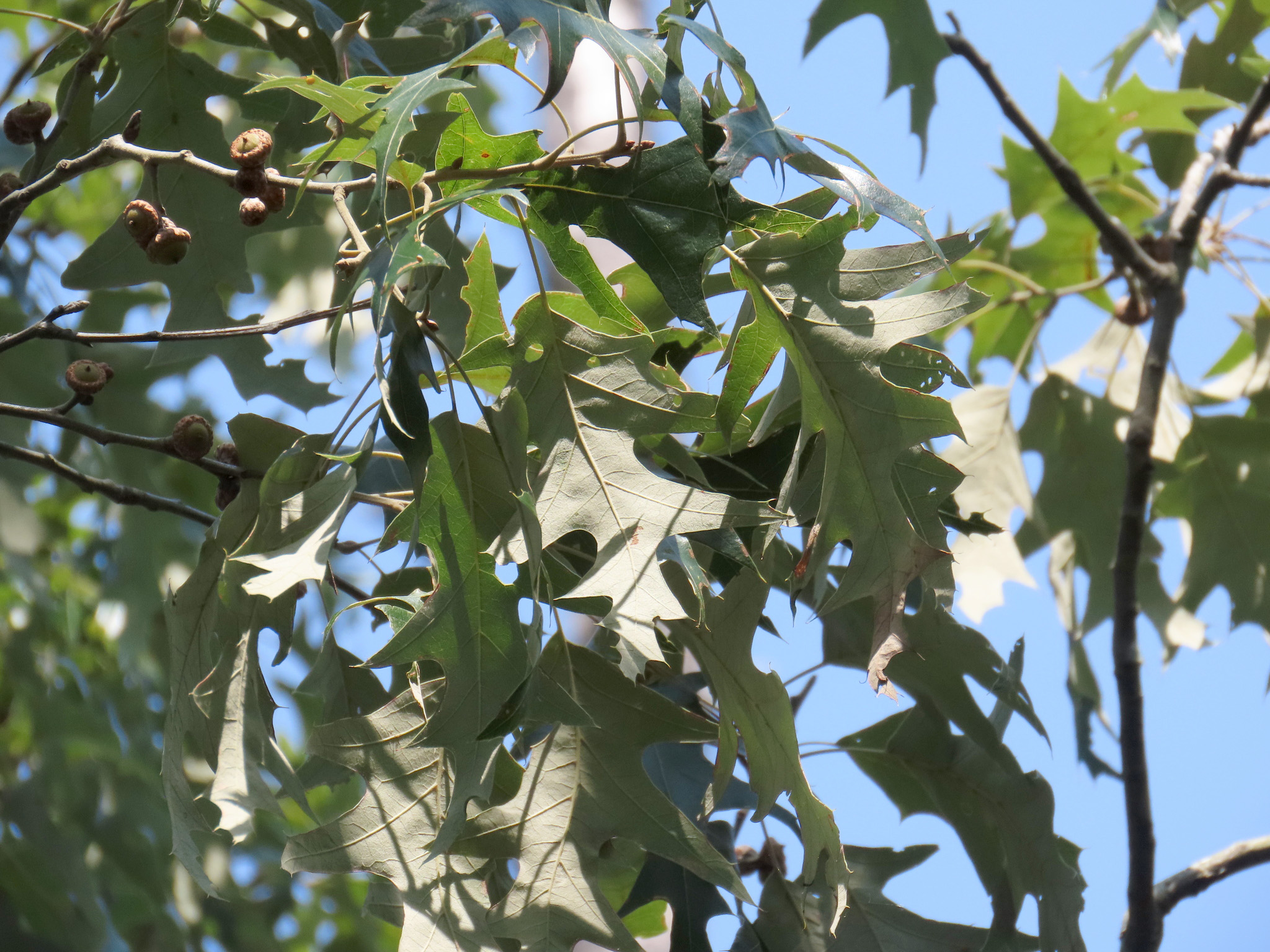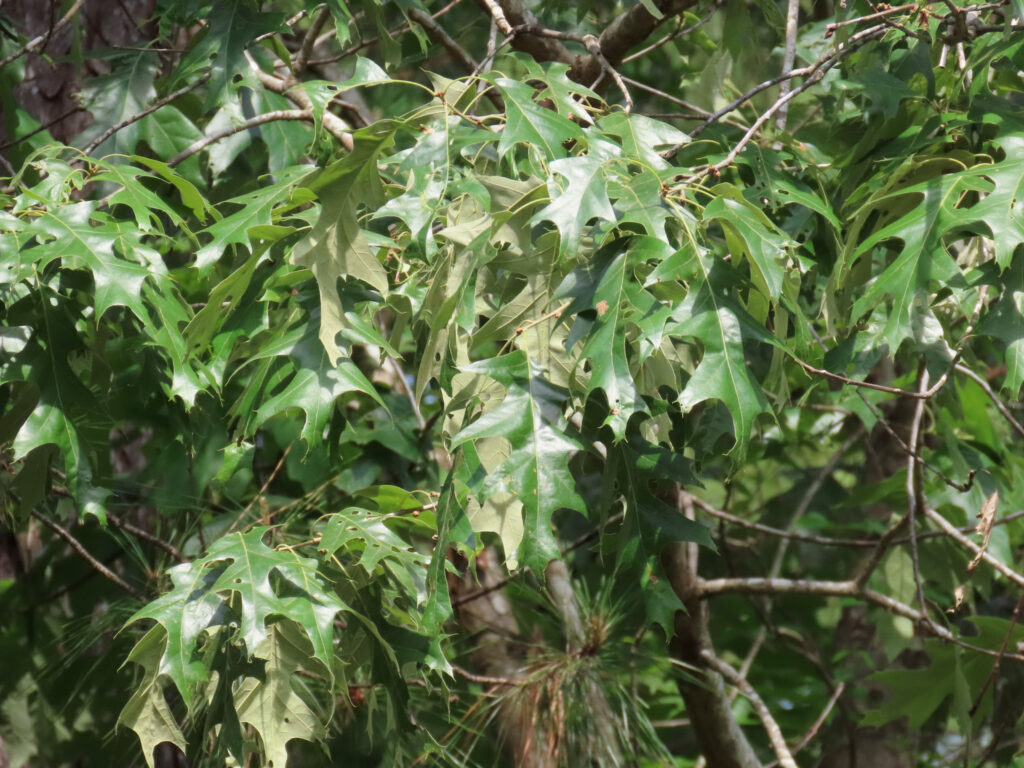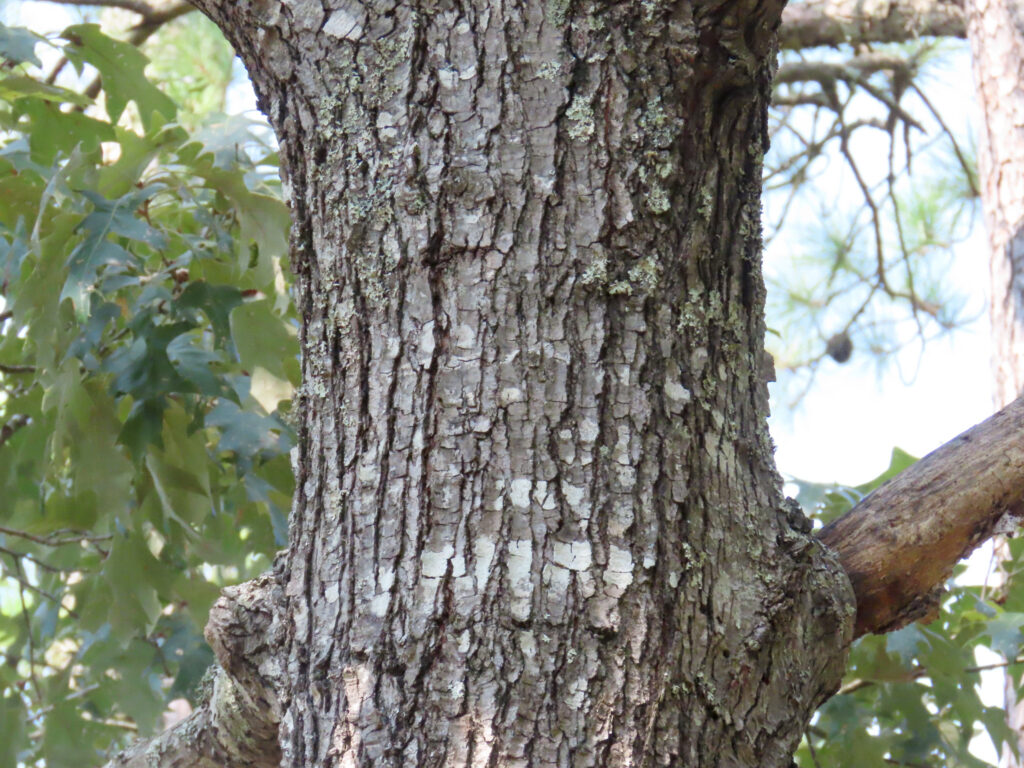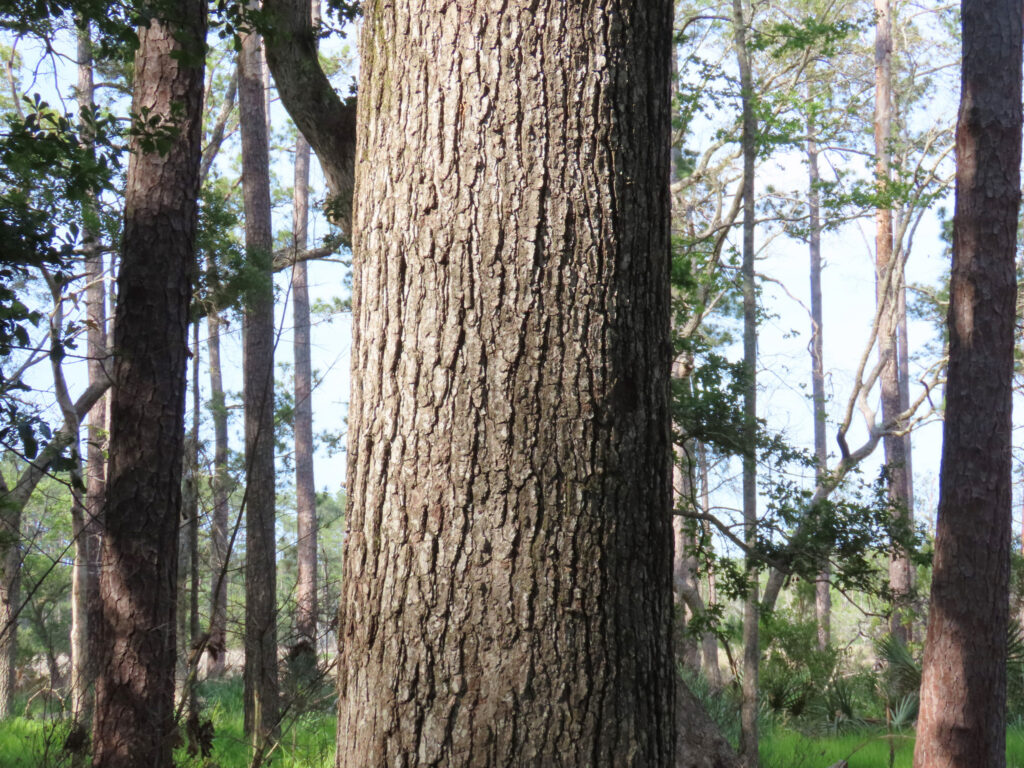




This week for Flora and Fauna Friday, it’s the pillar of our floodplain forest community, Cherrybark Oak (Quercus pagoda).
Cherrybark Oak is a native tree found throughout the coastal plain of the southeast, but strangely not in Florida. It grows predominantly in floodplain forests, preferring the sandier and drier soils found within a floodplain’s profile where the water table is high and soils rich, but only infrequent flooding. Cherrybark Oak is a member of the red oak group, meaning it has late maturing acorns, bristle tips to its leaves, and ruddy colored wood. Its leaves are a dark-green with a tan underside and deep lobes, taking on a shape somewhere in between Black Oak (Q. velutina) and Southern Red Oak (Q. falcata), leaning more towards the latter. In fact, Cherrybark Oak was for a long time considered just a subspecies of Southern Red Oak. That’s surprising to me, as the two are remarkably distinct when you look beyond the leaves. Cherrybark Oak’s most distinguishing feature is predictably its bark, which is silvery on the surface of its small rectangular scales of bark with the furrows running between them a blend dark gray and rusty orange. This bark pattern is similar to the unmistakable bark of our abundant Black Cherry (Prunus serotina), especially when young. The bark and trunk shape of Cherrybark Oak is quite distinct among South Carolina’s oaks. Cherrybark Oak’s trunk is generally straight as an arrow, with a buttress towards the base that widens and furrows with maturity. It grows rapidly to a height exceeding one-hundred feet and attaining a diameter of two to three feet in only a handful of decades. They can live for several hundred years and may reach a diameter of six feet within that time.
Their rapid growth rate, straight trunk, and high quality reddish wood make Cherrybark Oak an economically important hardwood timber species in the Southeast for use in furniture, flooring, and interior finish. It’s an especially valuable timber tree in bottomlands and floodplains where it can be grown quickly and sustainably in its natural habitat. These floodplain forests are the perfect nursery for trees, having ample water year round and periodic floods that deposit sediment to renourish the soils. Cherrybark Oaks are also wonderful trees for wildlife. Oaks collectively sustain the highest biodiversity of insect life of any genus in the Eastern United States. This makes them magnets for leaf gleaning birds and woodpeckers, and a great shade tree to sit under for any bird watcher looking to sneak a peak of transient warblers during migration. Its acorns are also an important winter food source for many species of birds and mammals, like White-tailed Deer, Wild Turkey, Blue Jays, woodpeckers, squirrels, mice, and Raccoons. Red oak acorns in gerenal, although tougher on the gut due to high tannin levels, are a more important food source for wildlife than white oaks most years. White oak acorns are larger and more palatable, but their size makes them difficult for some species to eat and they germinate soon after they hit the ground. Conversely, red oak acorns stay dormant for much longer, which keeps them edible through the harsh tail end of winter and allows them to be cached away by squirrels, jays, and woodpeckers for longer. They have a higher concentration of protein and fat as well, making them more nutritious by volume. This makes red oaks an irreplaceable staple in the winter diet of many wildlife species.